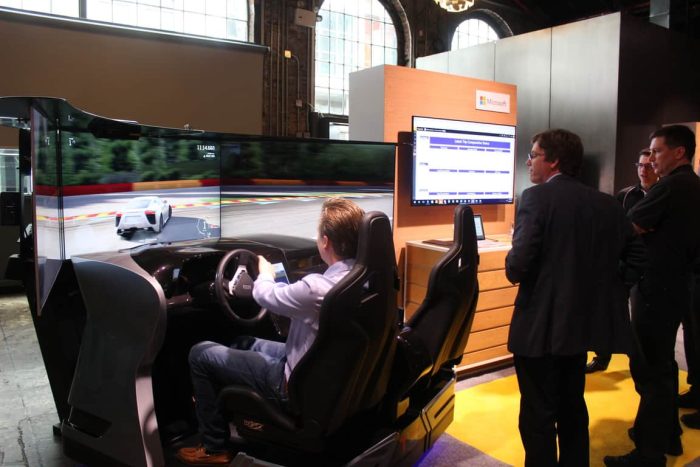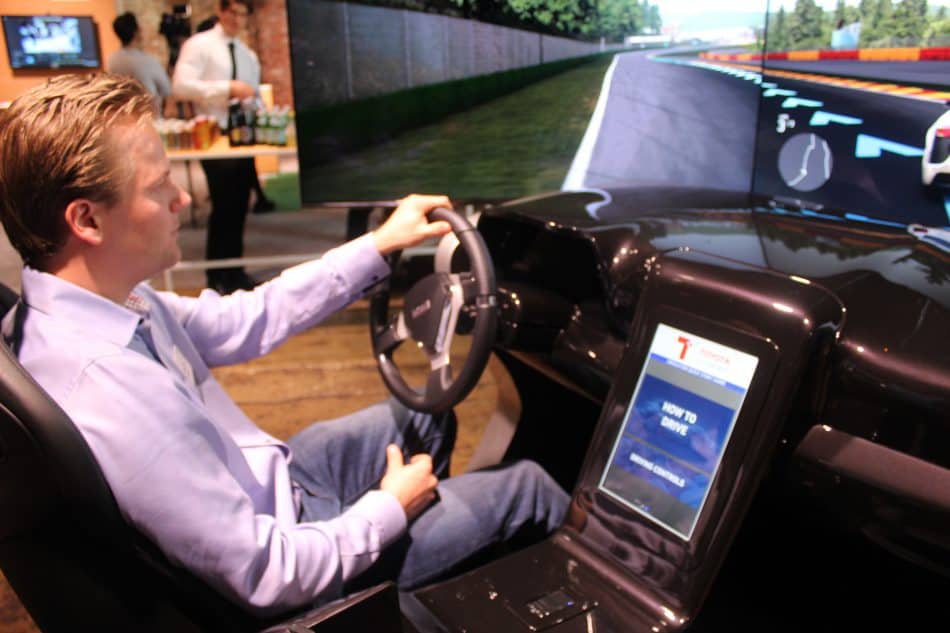Digital Difference event: Hands on with Microsoft’s Connected Vehicle demo
3 min. read
Published on
Read our disclosure page to find out how can you help Windows Report sustain the editorial team Read more

Yesterday, Microsoft held a Digital Difference media event in New York City, featuring dialogue and insights around advancements in several major areas, including health, retail, transportation, robotics, sports fan engagement and consumer goods. While several Microsoft customers and partners were showcased at this event, we had a chance to go hands-on with a simulated demo of Microsoft’s own Connected Vehicle technology, guided by Christan Berg, Product Manger, Business Intelligence, and Analytics at Microsoft.
In this case, the Connected Car was a simulator, using the Xbox Game Forza 6 to simulate the external environment. There were also sensors on the simulator, measuring steering wheel input, and acceleration and braking. Outward facing cameras, and an inward facing camera in the form of a Kinect was also present in the simulation.
According to Christan Berg, machine learning is able to analyze and measure the driver’s stress, anxiety, and engagement to create a driver score. The driver score also measures how much time your eyes are on and off the road, showing that the car can tell if you’re looking at the right things. Importantly, the technology is adaptive, so it knows when it can disturb you, and when you need to concentrate.

As detailed at the Consumer Electronics Show, Christan Berg holds true to the fact that the automotive industry is going through rapid transformation powered by Industry 4.0. In fact, one of the key changes is the Connected Car, and estimates show that a quarter billion connected vehicles will enable new in-vehicle services and automated driving capabilities by the end of the decade. Christan Berg believes that this rapid transformation has an immense opportunity in the automotive industry, including safer cars, more reliable cars, and cars that make you more productive, whether you’re doing a conference call, or catching up on emails.
Berg detailed that in order to enable all these scenarios, cars will need to generate up 25GB of data per car per hour. So to help automakers keep up with these changes and deal with the data, Microsoft created the open source Microsoft Connected Vehicle platform, based on the Azure cloud (and available on GitHub.)
At the end of the day, the Connected Vehicle demo introduces Microsoft’s vehicle telemetry solution built on Microsoft’s Azure and the Internet of Things. The advanced analytics, data, and business intelligence derived from this driving simulation are visually quantified by Power Bi and spotlights the products and services solutions made possible for auto dealers, insurance providers, manufacturers and drivers across the world.








